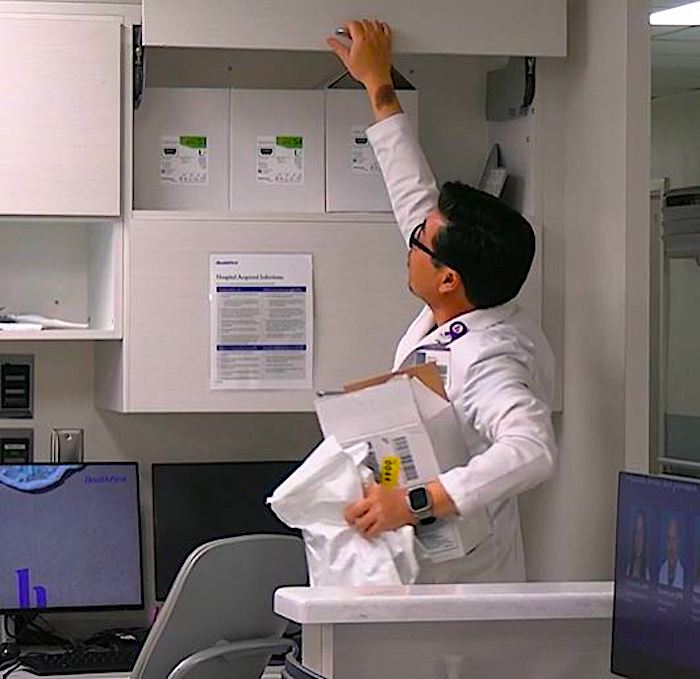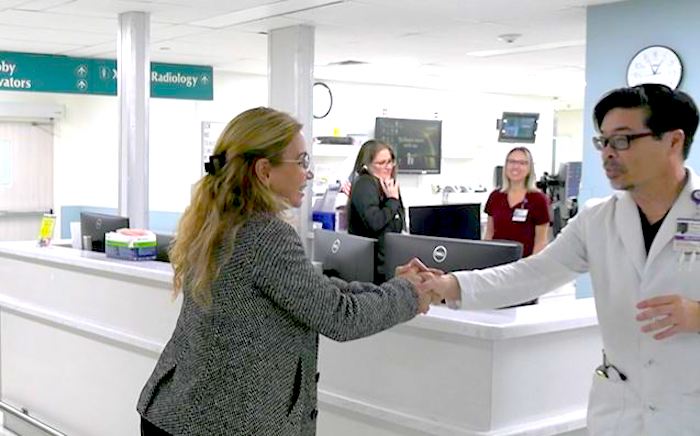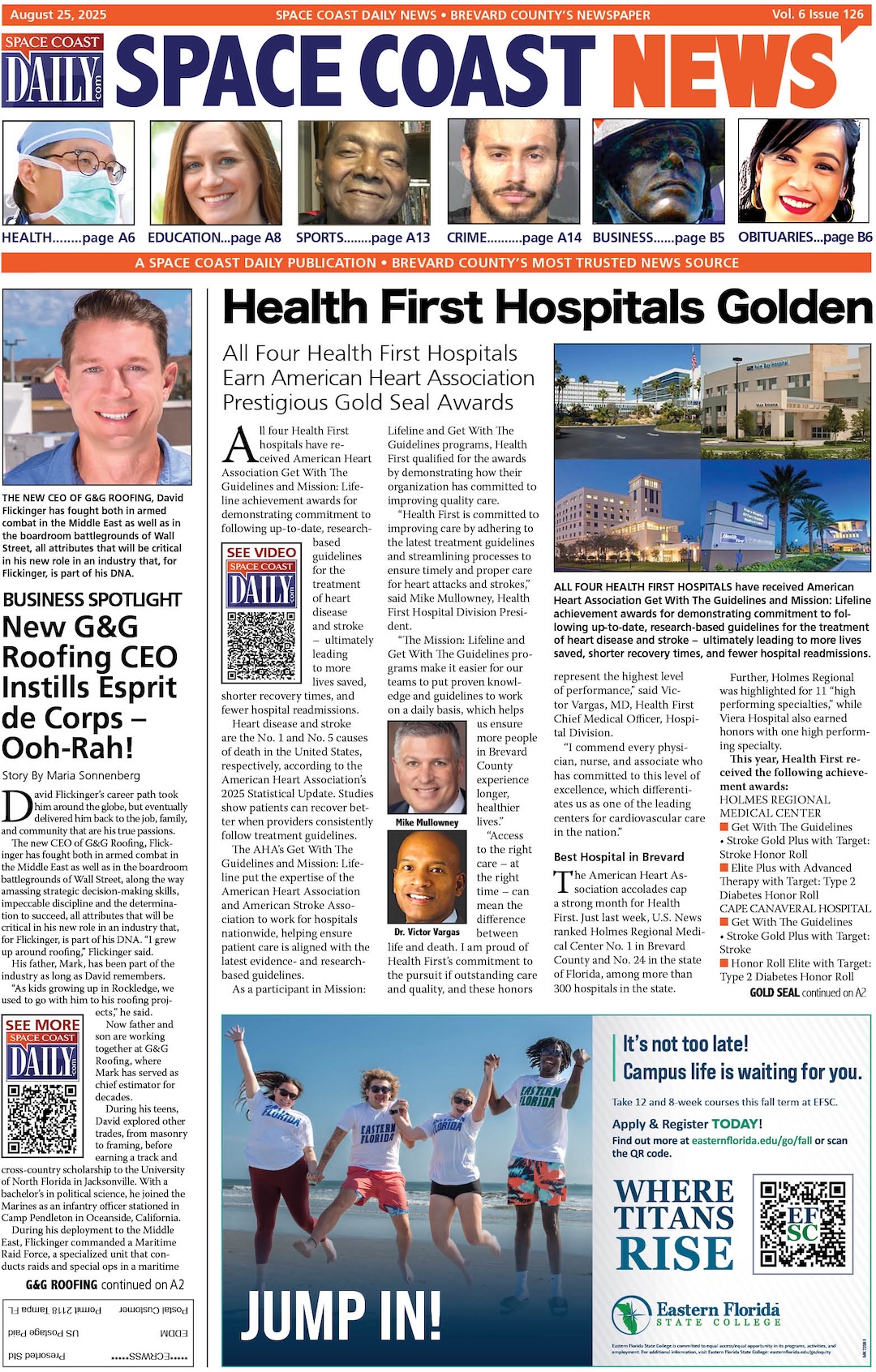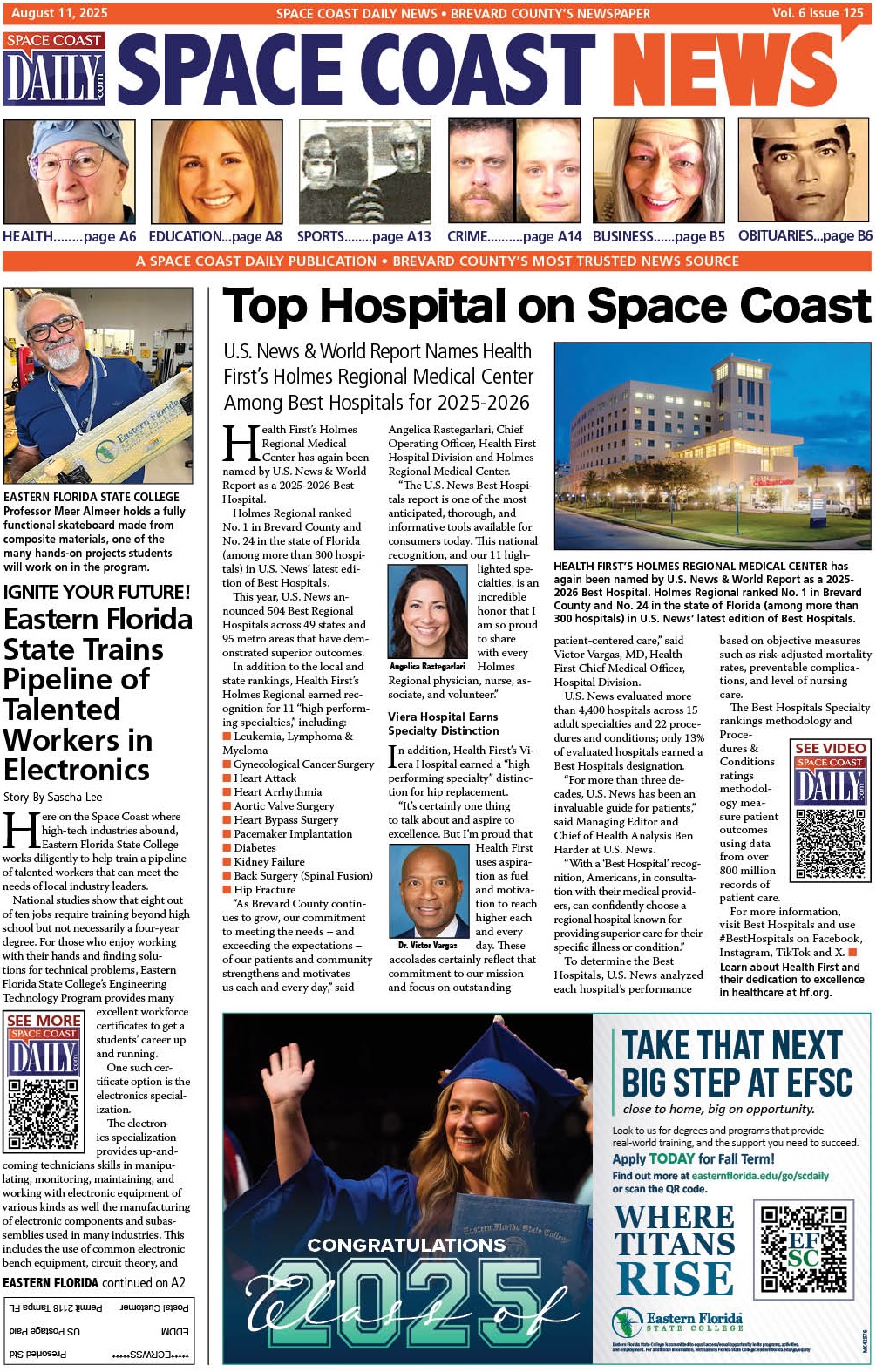Out of Harm’s Way: Evacuation and Re-Opening of Health First’s Cape Canaveral Hospital Designed Around Safety First
By Space Coast Daily // October 18, 2024
HURRICANE MILTON UPDATE

With approximately 56 inpatients, including 4 ICU patients, the decision was made by hospital and system leadership on Tuesday, Oct 9 to evacuate Cape Canaveral – including all hospital and Medical Office Building staff and patients.
BREVARD COUNTY, FLORIDA – With a ferocious Category 5 Hurricane Milton steaming through the Gulf of Mexico toward Florida’s western coastline, Health First and Cape Canaveral Hospital officials were already planning around the potential impacts the storm might have on the eastern side of the state – particularly to the 150-bed hospital that sits a mile from the Atlantic coastline and on a causeway on the Banana River.
Still two days out from landfall, the center eye of Milton was projected to approach and exit Brevard County as a Category 1 hurricane – meaning strong sustained winds and storm surge, that would directly impact hospital operations.
With approximately 56 inpatients, including 4 ICU patients, the decision was made by hospital and system leadership on Tuesday, Oct 9 to evacuate Cape Canaveral – including all hospital and Medical Office Building staff and patients.
First and foremost, hospital leaders earlier in the day – before an evacuation decision was rendered – decided to proactively move the hospital’s most vulnerable ICU patients to other hospitals in the area. Secondly, nearly half of the 52 remaining patients were eligible to be discharged – leaving approximately two dozen patients for transfer to other hospitals – primarily one of Health First’s 3 other Brevard County hospitals – Viera, Holmes Regional or Palm Bay.
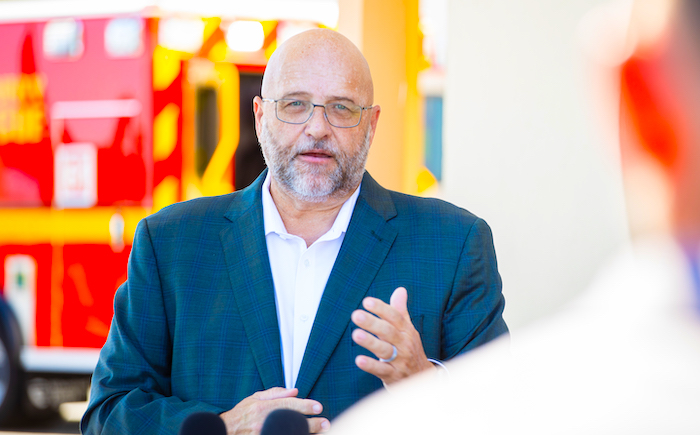
Wayne Struble, Health First’s Director of Emergency Preparedness, is no stranger to natural – or man-made disasters, having been a part of, by his estimation, dozens of hospital evacuations (including 5 at Health First) and playing a critical role public emergency response from Florida hurricanes to Hurricane Sandy in New Jersey and as a first responder during the 9-11 terrorist attacks in New York. According to Struble, it is no small decision to evacuate a hospital or critical infrastructure .. but “worst case” scenarios are something that must be planned for year-round.
“In this particular case, obviously storm surge, wind, flooding, loss of power are all things we consider in regard to a closure. Plus, while we have three bridges to the barrier island, if one of more were to be closed, our access – to supplies, services, energy/power, patient and staff – is severely limited. You don’t know how long it might be before power is restored and roads re-open. The last thing we want to do is put our patients, their loved ones, providers or associates in danger,” said Struble.
Struble says that while evacuating a patient in advance of a hurricane can be a frightening, confusing or emotional time, most patients and family members understand the necessity for doing so.
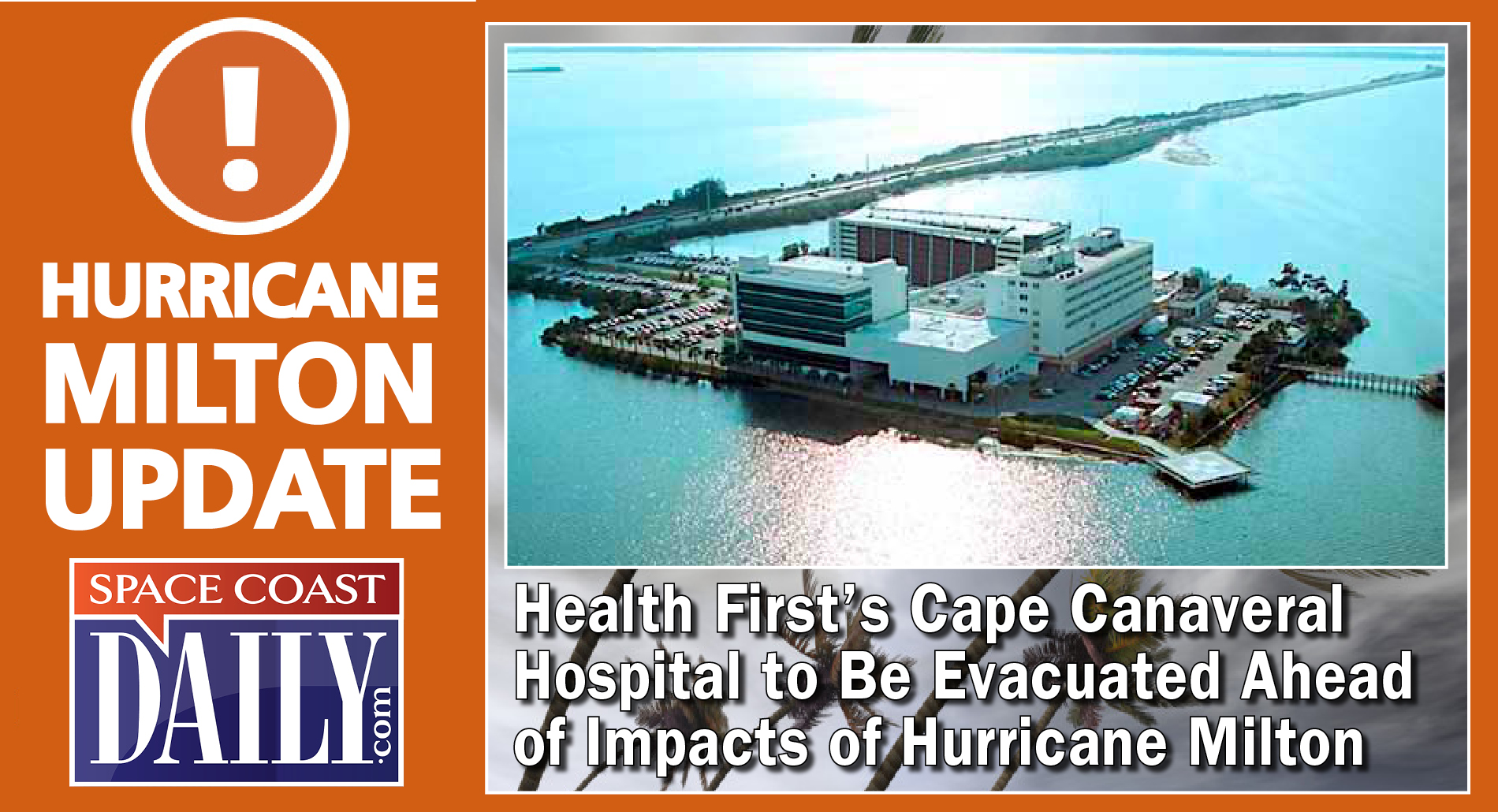
“It’s rare that we ever have to do this – the last time was in 2019 for Hurricane Dorian. But most patients and family members understand what we’re doing and why we are doing it. Communication is certainly key – between nursing and providers and patients and their loved ones. The better they understand the process, where they are being moved to, what’s going to happen next – it’s all part of that emergency response.”
Struble adds that the ability to anticipate and plan around worst-case scenarios is critical for any organization, regardless of industry.
“A successful organization is always preparing for what-ifs, whether it’s from a storm, or an IT or infrastructure issue, man-made, mass casualty. This year for Hurricane Milton, we had many people at the hospital and leadership levels who had never been through an evacuation before – so this was a learning experience. But they’ve also all drilled for this scenario, and we did very well,” said Struble.
“At Health First, we’re ready for whatever happens – and then we’re always thinking about the community and the patients. We left the ED open at Cape Canaveral as long as we could to help serve the community in that area or delay moving the patients out of cape in the interest of those patients vs. what’s the safest option for them. But everything we did was out of a safety concern for them and our community.”
Cape Canaveral Hospital would remain closed for approximately 36 hours and in between that time, a large tornado that damaged portions of Cocoa Beach was captured less than a mile away on video from a hospital office. However, after final state inspections, Health First’s Cape Canaveral Hospital re-opened with minimal damage on Friday, Oct. 11 at 2 p.m.

As the hospital began the process of re-opening, starting Thursday evening, Andrew Cain, Vice President and Cape Canaveral Hospital Administrator, who was one of those “evacuation newbies” Struble referred to, was onsite as beds and supplies were moved, hospital inspections began, minor repairs made, and associates and physicians welcomed upon their return on Friday.
“Whenever you remove patients from a hospital, all patients are distributed throughout Health First or we partner with local hospitals within the area to transfer patients. And because we have no patients left and we have undergone a hurricane and evacuation plan, part of that process is to have our state resources through AHCA (Florida’s Agency for Healthcare Administration) to come in and survey our building to ensure that the utilities, the life safety systems and the overall building itself is sound and ready for patient use. We received that approval at 11 a.m. Friday morning,” said Cain.
“An incredible amount of teamwork, planning and collaboration, goes into that. It’s not as easy as flipping on the lights and opening the doors, so there are a lot of logistics to bringing those supplies back onto campus and online, ensuring that the equipment that will then care for them on back onto this campus functions properly,” Cain explained.
“This has truly been an impressive feat that was accomplished here. And for our associates to be able to navigate this with grace and to do it with a smile on their face, because it really is a stressful time, especially associates that work during a storm. They’re not really sure what they’re coming back to when they return to work, so it was especially important for me and our leaders to meet and greet them when they returned to duty on Friday afternoon.
“But we all understand and embrace the mission and reason for our existence – our community, our friends, families, neighbors. And we thank the entire Brevard community – including our patients and their loved ones, our providers, associates, first responders and local and state government agencies for a smooth transition – ensuring the delivery of safe and effective care.”
